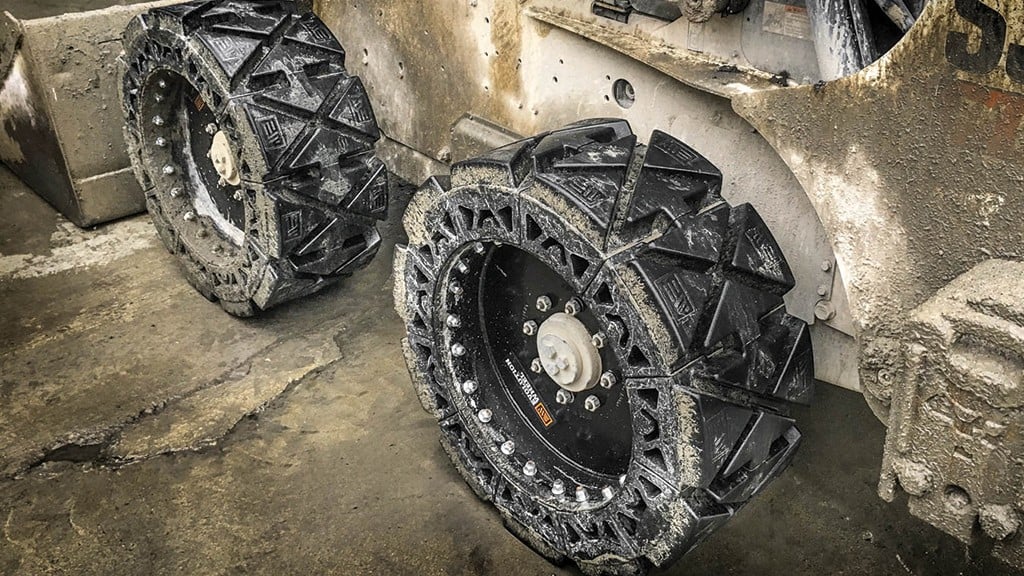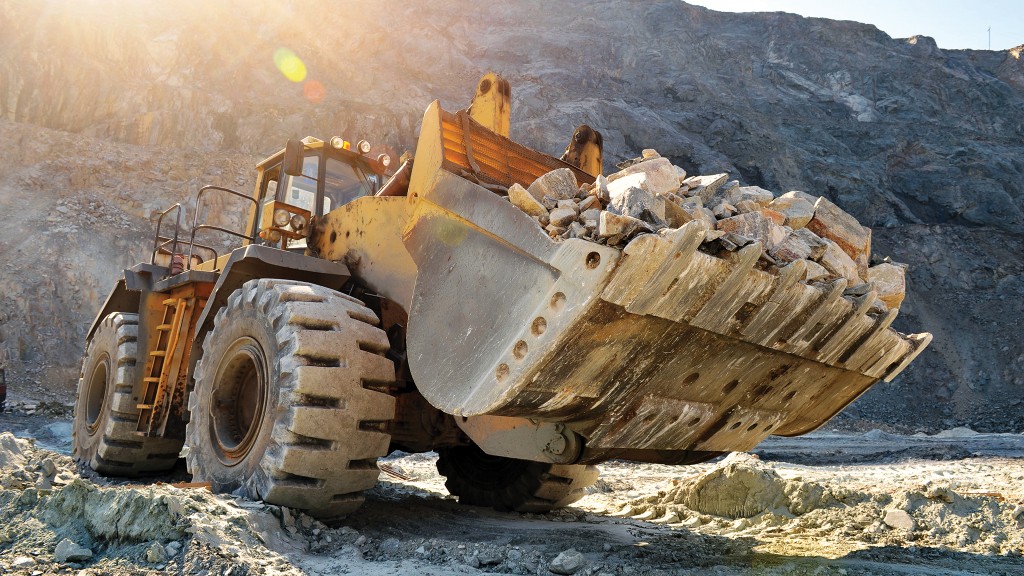Segmented skid-steer tires shorten downtime
Evolution Wheel's tire system requires little repair time

A catastrophic tire failure can easily occur when running equipment in a rock quarry or demolition site where the equipment's tires are exposed to extreme abrasion hazards, broken concrete, or jagged steel. This could result in hours or more of extended downtime as the tire is changed or repaired. Evolution Wheel's innovative solid tires for skid steers, telehandlers, and a range of agricultural heavy equipment can dramatically reduce that downtime. The unique design of its tires features rubber segments that are bolted onto the rims. If one of those segments becomes damaged, it can quickly be swapped out with a new segment.
A tire that comes together in segments
It takes four nuts to bolt one segment onto the rim of the tire. This means that if a single section is damaged, the operator can easily remove that segment and replace it with a new one using only a wrench. The prolonged downtime of taking the machine out of action, moving it to a maintenance area, and replacing the tire is eliminated.
Evolution Wheel Sales and Marketing Manager Marcus Leite says that this is where the main value proposition lies, "An operator with basic tools can swap out that segment in five minutes and the machine doesn't even have to leave the location. It doesn't need to be towed anywhere. A pickup truck could roll in with that segment, zip it off, zip it on, and you're back off to the races."
Core geometry in the rubber
The rubber of an Evolution Wheel tire is able to compress and flex not only because of the geometric apertures, but also its rubber compound. The shapes of the apertures are the result of extensive engineering, testing, and research and development - as is the chemistry of the rubber. For each product, Evolution Wheel searches for the proper abrasion and flexibility. Once they are found and completely tested, a full-scale production tire is made.
With tread depth comes performance
Evolution Wheel tires have more tread depth than any other manufacturer, according to Leite. This is a design feature that improves the traction of a machine. He says, "It's going to act like a paddle in what we call two-stage traction. That first bit of traction is really loading up the tire and as that tire loads up, the core geometry will twist and as that tire rotates, it'll just push you through which is why our AT Series for skid steers is very popular."
Value is also found in a deeper tread as the thicker rubber lasts longer. "So that tire is just going to last three times that of a premium pneumatic, while our HS Series will last three to five times longer depending on how abrasive the environment is."
Steel rims act as a ballast
The tires made by Evolution Wheel are much heavier than traditional pneumatic tires. When mounted on a piece of equipment, such as a telehandler, the additional weight becomes an advantage. The most optimal place to add ballast on a telehandler is at a point closest to the ground. With tires acting as extra weight, operators can achieve better lifting performance and machine operation is more predictable.
Low maintenance to no maintenance
Engineers at Evolution Wheel have worked to create maintenance-free tires. There is a break-in period of the solid tires of about 30 hours of use until they reach their full flexibility and responsiveness (they can be used in normal operations with no restrictions during the break-in period). And the geometric apertures need to be cleaned of dirt and debris, but the system is essentially free of maintenance. The tires do not even need to be rotated. Even so, retread kits are available and emphasis is placed on serviceability. The heavy-duty rims are designed to be used for multiple life cycles of the rubber. Servicing is simply a matter of unbolting old segments and replacing them with new segments.
More products for more machines
The company also recognizes that there are a number of different categories of equipment for which an Evolution Wheel tire concept could be applied and it is working to develop those products, such as a tire for backhoe loaders. Leite says, "We think that we're doing something different around here when it comes to tires, having the ability to service tires in the field and at the same time get that much more life out of it. That's what we do here. That's our value proposition. It's a great product because it's simple and it works."



